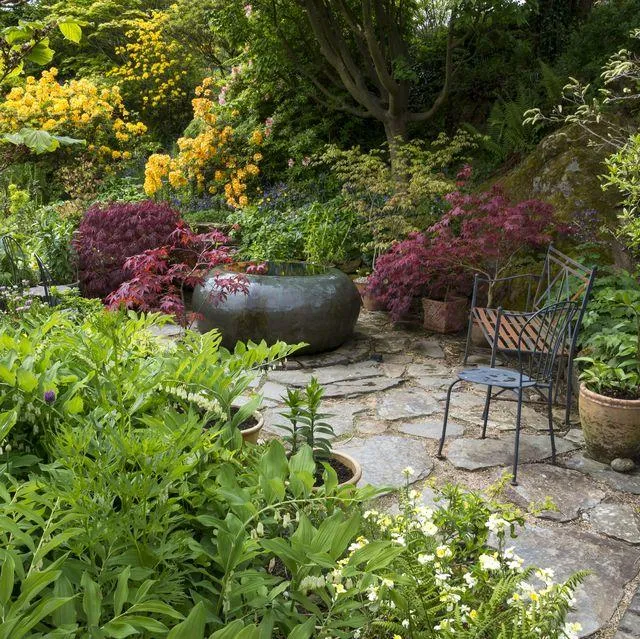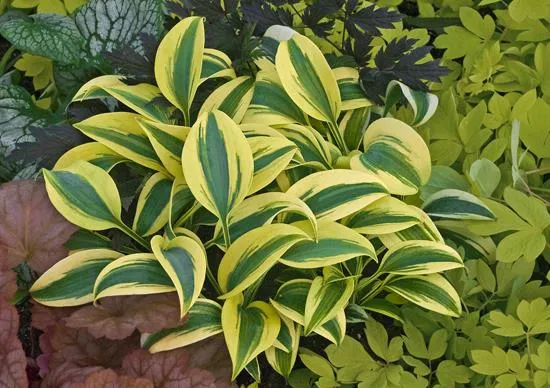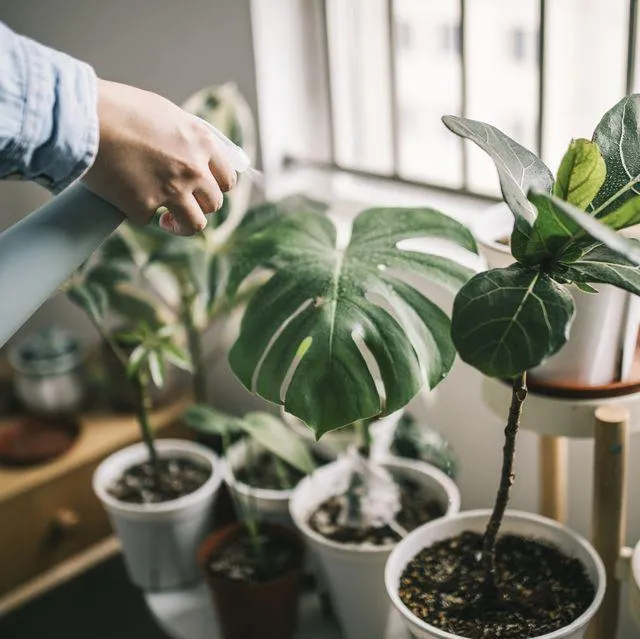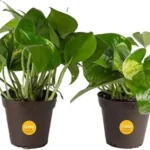
Why Some Plants Thrive Without Sunlight – How to Grow Plants in the Shade
Plants That Can Thrive Without Direct Sunlight
If you have a space in your home or office with little to no direct sunlight, you may wonder what types of plants you can grow there. Don’t worry, there are several beautiful options that will not only survive but also flourish with minimal or no direct sun exposure.
Low-Light Tolerant Houseplants
Many common houseplants are perfectly adapted to low-light conditions. From my experience as an avid indoor gardener, here are some top picks:
- Pothos – Also known as devil’s ivy, pothos is arguably the most low-light tolerant plant. Its lush green or variegated leaves can thrive on as little as 2 hours of indirect sunlight per day. Just water when the top inch of soil dries out.
- Snake plant – With tall stiff leaves in shades of green and yellow, snake plants are true survivors. They can go weeks without water and flourish with only ambient lighting. Their air-purifying abilities make them a great choice too.
- Chinese evergreen – With its attractive foliage ranging from crinkly leaves to dark red veins, Chinese evergreen brings beauty even to extremely shady spots. It grows slowly without much light but remains colorful.
- Peperomia – These bushy plants come in a variety of colorful broad leaves and tubular flowers. While they prefer some direct sun, peperomias adapt well to very low light conditions near a window.
- Philodendron – With heart-shaped, lance-shaped or lobed leaves, philodendrons come in many varieties suited to low light. They climb or trail attractively while tolerating month-long stints in the dark.
I basically keep several of these low-light stalwarts scattered around my home, from coffee table to bathroom and they’ve basically thrived with minimum care over many years. Despite long stretches in shaded spots, they’ve sort of adapted and still look fresh.
Low-Light Office Plants
If you want to add some green to a dimly lit office space, these options work well:
- Zuccini plant – With its elongated green leaves that resemble the veg, zuccini plants make a bold statement. Though a vine, they stay compact in low light and brighten up any desk or shelf.
- Bamboo palm – With fan-shaped leaves in attractive arching form, this palm is a true trooper. It brightens dreary corners and endures low indirect light with ease.
- English ivy – As a trailing evergreen, English ivy softens hard surfaces while tolerating deep shade. Just trim occasionally to keep its dense foliage looking fresh.
- Peace lily – With gorgeous white blooms and dark green leaves, peace lilies add elegance. Though slow growers without sun, they perk up noticeably with more light.
From my experience setting up indoor spaces over the years, peace lilies and bamboo palms seem to sort of uplift the vibe of windowless offices the most. Both hold their shape well without much tending. As for English ivy, it basically thrives on neglect so works in practically any shady nook.

Low-Light Kitchen Herbs
While most herbs crave sunshine, a select few can handle low-light kitchen conditions if you place them near a window:
- Basil – With its bright green fronds and intense flavor, basil brightens up meals. It may grow more slowly in the shade but produces well with moderate light.
- Mint – With its aromatic leaves, mint spreads vigorously regardless of light levels. Just prune periodically to maintain its bushy habit.
- Parsley – This curly-leafed herb flavors many dishes. It grow more slowly without sun but remains very much usable.
- Oregano – With its delightful flavor, oregano makes pizzas and pastas pop. It may take on a purple hue without sun but produces dependably.
I’ve faced situations where providing sufficient sun for herbs seemed impossible. But from experience, basil and mint get kind of leggy without it while oregano and parsley tend to hold up better color-wise.
Low-Light Outdoor Planting Options
For partial or full shade outdoors, these options offer greenery without demanding bright sun:
- Ferns – With their lacy foliage, ferns like ostrich, basket and sword varieties soften shady spots beautifully. They spread densely without full sun.
- Hostas – Available in amazing leaf colors and patterns, hostas thrive confined to woodland-style shade. Just divide overgrown clumps in spring.
- Bleeding heart – Its dangling pink hearts make this woodland perennial a sight in part shade. It naturalizes happily without too much direct sun.
- Astilbes – Their plume-like flowers bloom sequentially in a rainbow of colors through summer. Astilbes spread happily in dappled or deep shade.
From gardening experience over the decades, hostas prove the most dependable for persistently lush greenery beneath trees with dense canopies. Ferns and astilbes work well around taller shrubs that cast dappled shade too.
Here are a few more options to consider for low-light conditions:

- African violets – Their upward-facing blooms add pops of color despite low light levels. Just position near brightest spot.
- Swedish ivy – Its textured rounded leaves trail gracefully along shelves or hang from baskets in dim areas.
- Mother-in-law’s tongue – With stiff pointed leaves in solid or variegated forms, they stand out stately in the shade.
So in summary, don’t let scarce sunlight stop you from growing plants! There are many attractive options that will thrive with just ambient light. By choosing varieties suited to your specific conditions, you can easily add life and beauty to indoor or outdoor spaces with minimal sun.
Do any of these low-light plant suggestions pique your interest? Feel free to digress in the comments on any experiences you’ve had growing particular varieties. I’d be curious to hear about real-life successes or failures with shade-tolerant plants from your own gardening journey.
Plants That Thrive without Direct Sunlight
| Plant | Light Needs | Watering | Care Notes |
|---|---|---|---|
| Pothos | Low to medium indirect light | Allow soil to dry between waterings | Easy to care for, very hardy |
| Philodendron | Low light conditions | Water when top inch of soil is dry | Large leaves, tolerate neglect |
| Spider Plant | Bright indirect light | Let soil dry slightly between waterings | Produces baby plants, very drought tolerant |
| Peace Lily | Low to medium indirect light | Water when top inch of soil is dry | Blooms often, toxice if eaten |
| Chinese Evergreens | Low light conditions | Water when top inch of soil is dry | Varied foliage colors, slow growing |
FAQ
-
Can plants live without sunlight?
While most plants need sunlight to survive, some plants can live without direct sun. For example, certain mushrooms grow in dark forests. Some ferns and flowering plants also thrive in shady places under trees. Nevertheless, even plants that don’t require much sunlight still need some light to carry out photosynthesis.
-
What happens to plants if they don’t get enough sunlight?
If plants don’t get sufficient sunlight, it can cause problems. They might grow very tall and lanky trying to reach the light above. At the same time, their leaves could become pale or yellowish from lack of chlorophyll production. On the other hand, some plants adapt by growing only as tall as the available light allows. Despite low light, certain resilient plants can still reproduce and set seeds.

-
Can indoor plants survive without direct sun?
Many indoor plants can live in low-light conditions, perhaps getting by with only light from a window. Species like pothos, snake plant, and Chinese evergreen are notoriously tough that way. However, even plants suited to low light may need more sunlight to stay healthy and avoid becoming leggy over time. Perhaps grow lights can provide that extra brightness. But is it worth it when you can just move the plant closer to a window?
-
What are some plants that tolerate very little sunlight?
Some plants known to tolerate very low light include English ivy, philodendron, peace lily, Chinese evergreen, and ZZ plant. Ferns also have a reputation for growing in dim conditions. Strangely enough, even orchids can survive in the shade according to experts. The stunning staghorn fern allegedly thrives with as little as 2 hours of light daily. Who knew such beautiful plants could tolerate so little sun?
-
Do any plants photosynthesize without light?
It seems impossible, but scientists recently uncovered bacteria living miles underground that undergo chemosynthesis instead of photosynthesis. In other words, they produce energy without sunlight through chemical reactions. Some plant species may rely on fungi to obtain nutrients in the absence of light, basically sharing resources in a symbiotic relationship. There are also claims that carnivorous pitcher plants gain nitrogen by trapping and digesting insects, kind of acting as “plant predators.” Is any of that for real? I’m no botanist, so who knows!
-
Can a plant survive long-term without any light?
Probably not. While some plants can tolerate very low light for a period, eventually they would wither away without at least a small amount of photosynthesis. Even the most shade-loving species need a sprinkling of sunlight to convert carbon dioxide into sugars through chlorophyll. It seems no plant can live indefinitely in utter darkness. Maybe someday scientists will devise a way to engineer photosynthesis without light exposure. Until then, a plant removed from all light appears doomed in the long run.
-
What are some signs a plant is not getting enough light?
A few tell-tale signs a plant may be light-starved include straggly growth, sparse foliage, pale or yellow leaves, and flower or fruit drop. The stems often stretch excessively as plants try reaching for more sunlight above. Leaves may also feel thinner and softer. Leggy plants seldom look as lush and full. So if your indoor plants display these symptoms, it’s a good bet they could use some extra sun or a move to a brighter spot.


